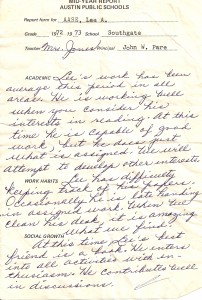The Pew Internet & American Life Project came out with an updated survey today, which found that only 8 percent of Americans aged 12-17 use Twitter, and that blogging is much less popular than it was in 2006, when the survey was last conducted. Now only 14 percent said they maintained their own blogs, which is half of the 2006 figure.
I had an opportunity to discuss some of the reasons for this Wednesday, in advance of the public release, with Mary Brophy Marcus (@BrophyMarcUSAT) of USA Today, for her story related to the study.
“To quote my 15 year-old-son, ‘Twitter is lame,'” says Lee Aase, manager of social media at Mayo Clinic. He says Facebook and texting may be satisfying teen chat needs.
“They’re so into text-messaging that that niche is already sort of filled for them,” he says.
Aase also says some teenagers may grow back into blogging as they hit adulthood: “Blogging has become a way to communicate with the world, about more meaningful issues, not just about communicating to friends.”
Read the full story, and get more details on the Pew site.
As I see it, the big thing that has changed since 2006, causing blogging to decline, is the immense popularity of Facebook, which was still pretty new back then. And with Facebook’s chat feature, combined with text messaging, most young people already have ways to do the short message communication with people who matter to them…their friends. There really isn’t much incentive for them to go to Twitter, because most of their friends aren’t there anyway; they’re all on Facebook. Or they can be reached via SMS.
It’s different for adults; many of us actually use our cell phones primarily for voice calls instead of text. And we see Twitter as a way to make connections with people who have common interests.
What do you think? Are there other reasons why teens don’t tweet?
